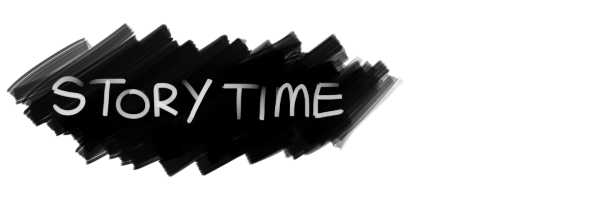
You’re sitting in your little wooden cubicle at the corner of an office. Your laptop is open in front of you; a picture of a black cat stares at you. Its lime-green eyes look into yours.
You maximize your Microsoft Word document. It’s blindingly white.
You lean back on your soft green office chair and sigh. You spin around, facing away from your cubicle. You look at the clock on the white wall to your left: 3:55PM.
You notice that you are bouncing your right leg.
You really should start writing your blog entry soon. You want one to be posted by Monday, which is in three days.
Instead, you go on your university’s Writing Centre website. This is where you work. You’re a peer tutor. You wonder how your co-worker’s drop-ins went at the Davis Centre. You’ll ask her about it when she’s back. Yours at Dana Porter were pretty empty today, which was strange.
With exception of today, your drop-ins had been busy this week. Many students had come to work on their personal narratives for a class you took last term.
You like narratives. They’re fun and a nice change from the formal essays that students usually bring. You remember your narrative for that class: there had been too many characters and unclear allusions; it was messy. You had eventually resolved these issues for the final draft, sort-of.
But this wasn’t the main concern students had with their narratives. Many of them came to you and said:
“I don’t really get the distinction between showing and telling.”
Take a look at the short narrative I’ve written above (I tried my best). Try to distinguish which parts you think are showing, and which are telling.
Finished? Let’s dive in.

In the first three paragraphs of the story above, it isn’t explicitly stated that the main character has something due (and is frustrated). However, it is shown by: the empty word document, the sigh, when they look at the time, and their restless leg.
The remainder of the story tells the reader who the main character is, what they are thinking about, and other background information.
Still unclear? My creative writing teacher said it best:
SHOWING builds a scene. It depicts action, often including dialogue. The reader feels present for the action, like they’re watching it on a stage or screen.
TELLING summarizes. The reader is told something rather than participating in it.
You've probably heard the rule of thumb for narratives:

And generally, I agree. Showing is very important. It makes the narrative real to the reader because it gives them a chance to engage with the scene.
But let’s not completely dismiss telling. It’s an important tool as well, and can be used to effectively pace the narrative.
For example, if in the story above I showed that the character was a peer tutor, showed that they were busy that week, and showed that they’d taken the course previously…… It would be a super long narrative; it wouldn’t get to the point.
This blog post would also be long(er). Oops.
So how can you find a balance?
My advice:
![[Advice Image]](/writing-and-communication-centre/sites/default/files/uploads/images/01-04.png)
(I failed to do #2 in my example above, oopsx2).
Of course, what you want to do with your narrative and how you want to write it are both up to you. There is no fixed amount of showing or telling that makes a narrative automatically “good”.
What makes a narrative “good” is whether it accurately conveys your story to the reader.
If you have any doubts, or want an objective view on your piece of writing, come check us out at the Writing Centre: click here or here or here for our drop-in times and locations! (They're all the same links, I just wanted to give y'all options).
We don’t just do narratives, we do everythiiiiin- well, many things.
I’m outtie,
Jameson
P.S., We'll try to post every Monday & Friday, so stay tuned!